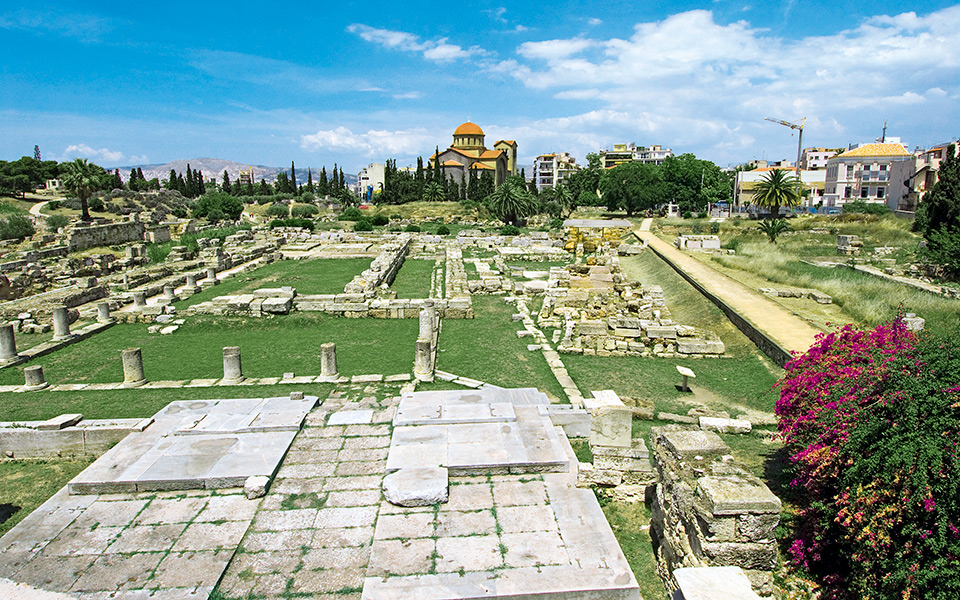The Ancient Cemetery of Kerameikos is another of the great archaeological parks that characterize the ancient heart of Athens. It has its own metro stop, but this fascinating site is easier to reach by walking straight down Ermou Street from the Monastiraki or Thiseio stations. Nowadays, the Kerameikos essentially marks the furthest western extent of central Athens’ usual tourist area, which makes it quieter, less-visited and perfect for cool starts or finishes to a day of sightseeing.
This park holds lots of pleasant natural and archaeological surprises, from its small stream – sometimes, after wet winters and springs, teeming with tadpoles and tiny frogs – to its grassy lawns, towering section of ancient city wall, ceremonial dining rooms and a tomb dedicated to 13 officers of the Spartan army.
In ancient Athens, Kerameikos was a place of transition, manufacturing, entertainment, ceremonies, defense and burial. Although located at the outskirts also of the ancient city, it was often a hub of activity, populated by an array of male citizens, women, foreigners and slaves. The primary features of this area were its tombs and twin city gates, the Sacred Gate and adjacent Dipylon Gate, which had distinctive functions at certain times of the Athenian religious calendar.
In early summer, Athenians participating in the annual Skira festival, which marked the year’s end (our June/July), departed from the Sacred Gate in a procession to Skiron, near Eleusis (modern Elefsina). In the autumn (our September), a larger procession would leave the Sacred Gate bound for Eleusis, at the start of the Greater Eleusinian Mysteries, or, every four years, in the opposite direction, from the Dipylon Gate into Athens, as part of the Greater Panathenaic festival.
“ This archaeological park holds lots of pleasant natural and archaeological surprises, from its small stream to its grassy lawns, towering section of ancient city wall, ceremonial dining rooms and a tomb dedicated to 13 officers of the Spartan army. ”
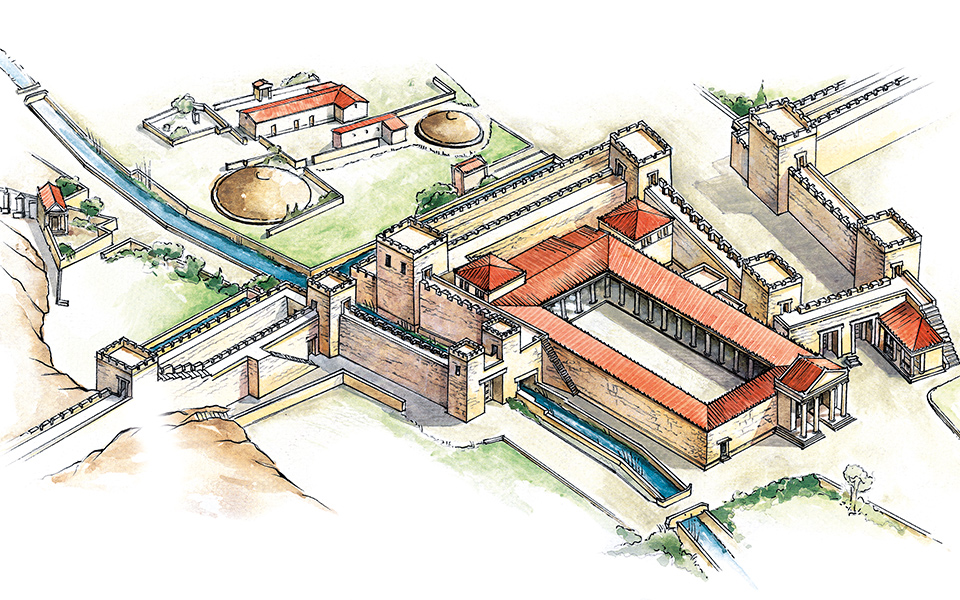
Aside from its occasional religious significance, this area was also the scene of many ordinary activities typical of ancient Athenian daily life. People passed by on their way into or out of the city, some heading for the suburban, tree-shaded Academy of Plato, while gate-guards, prostitutes, potters, wine-sellers, grave-diggers and mourners also crossed paths here.
When visiting the Kerameikos today, it is advisable first to stop on the small rise (South Hill) overlooking the park, where you will find an excellent map and a panoramic view. Once oriented, you might descend to the right, entering the Street of the Tombs. Here you will find sculpted steles, over-sized vases and various statues, sometimes framed within a small marble pavilion (naiskos), which are all part of the cemetery that once existed outside the Kerameikos city gates. Similar tomb markers are displayed in the National Archaeological Museum, but at the Kerameikos you can view the original funerary setting.
Proceeding back along the Sacred Way, one finds a portion of preserved city wall, whose distinct phases of construction (including the Themistoclean Wall) reflect Athens’ long tumultuous history of attacks, recovery and rebuilding of defenses.
If you step up through the narrow breach in the wall, you will find House Z to the right: once a fine courtyard-house in the later 5th and 4th centuries BC, but whose numerous small rooms later came to be used by women weavers, probably prostitutes, whose personal objects – including bronze figurines and small medallions depicting Aphrodite, goddess of erotic love – are now exhibited in the Kerameikos Museum. In Roman times, bronze workers and pottery-makers established workshops among the ruins of House Z.
Retracing your steps, you cross the small stream, once the ancient Eridanos “river,” and find successively on the right the Sacred Gate, the Pompeion and the Dipylon Gate. Further to the left, near Aghia Triada Church, lies the inconspicuous but historically significant tomb of a group of Spartans, who died assisting the Athenian oligarchs in their attempt to suppress the rebellious democrats in 403 BC.
“ When visiting the Kerameikos today, it is advisable first to stop on the small rise (South Hill) overlooking the park, where you will find an excellent map and a panoramic view. Once oriented, you might descend to the right, entering the Street of the Tombs. ”
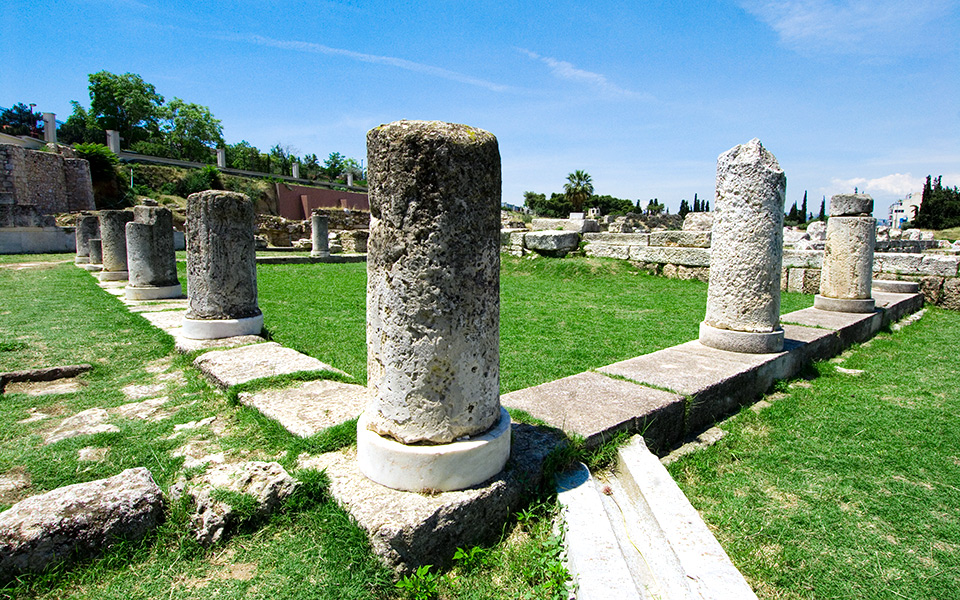
© Clairy Moustafellou
THE POMPEION
This is a building with ceremonial dining rooms at the back of a large colonnaded courtyard, in which was stored the trireme “float” used in the Panathenaic Procession. Note the well-worn threshold, over which, through the centuries, passed many wagon wheels and thousands of Athenian feet.
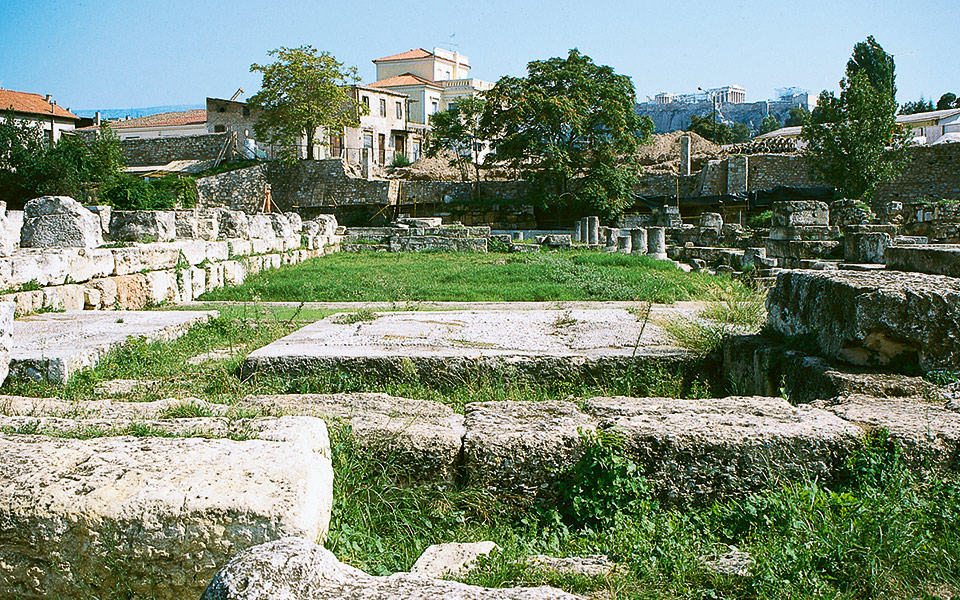
THE DIPYLON GATE
The fortified double-gate through which passed the road leading to the official state burial ground and Plato’s Academy. Just inside was a public fountain house where Athenian women and servants could refill their water jars, in the age before household running water.
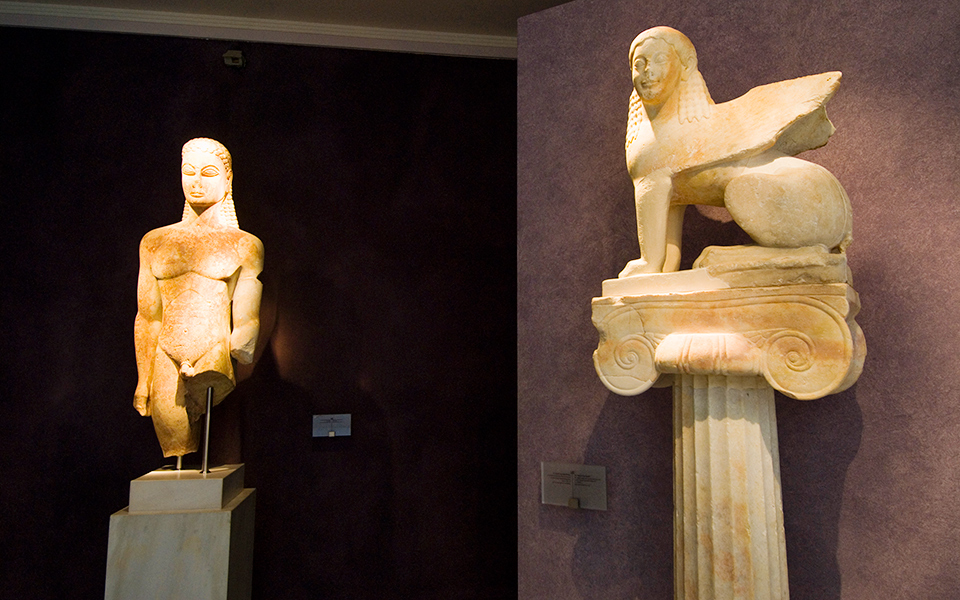
KERAMEIKOS MUSEUM
This is where you’ll see a magnificent Archaic Kouros figure, an excellent diachronic span of characteristic Athenian pottery and fascinating finds from House Z. Also, don’t forget the gigantic Dipylon Amphora (8th c. BC), in the National Archaeological Museum, discovered at Kerameikos, an impressive grave marker showing scenes of a typical Geometric-era funeral and mourners tearing their hair.

